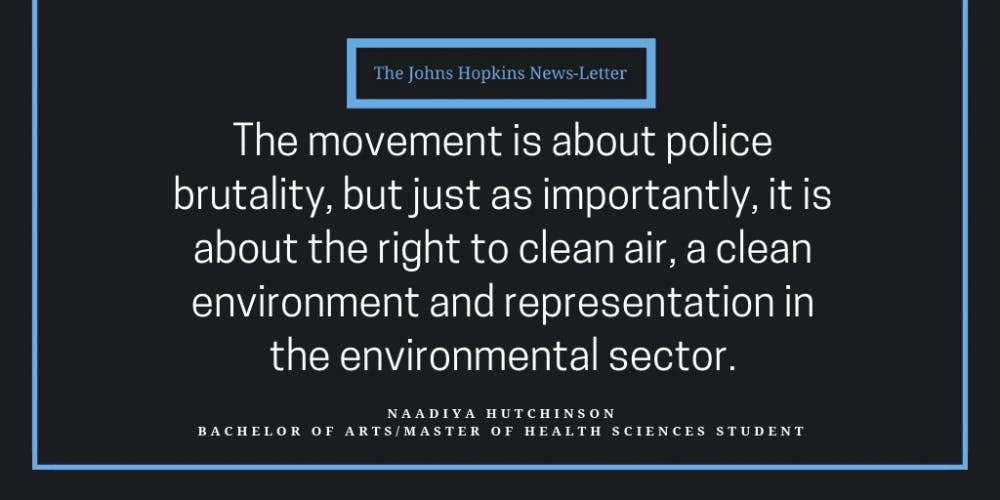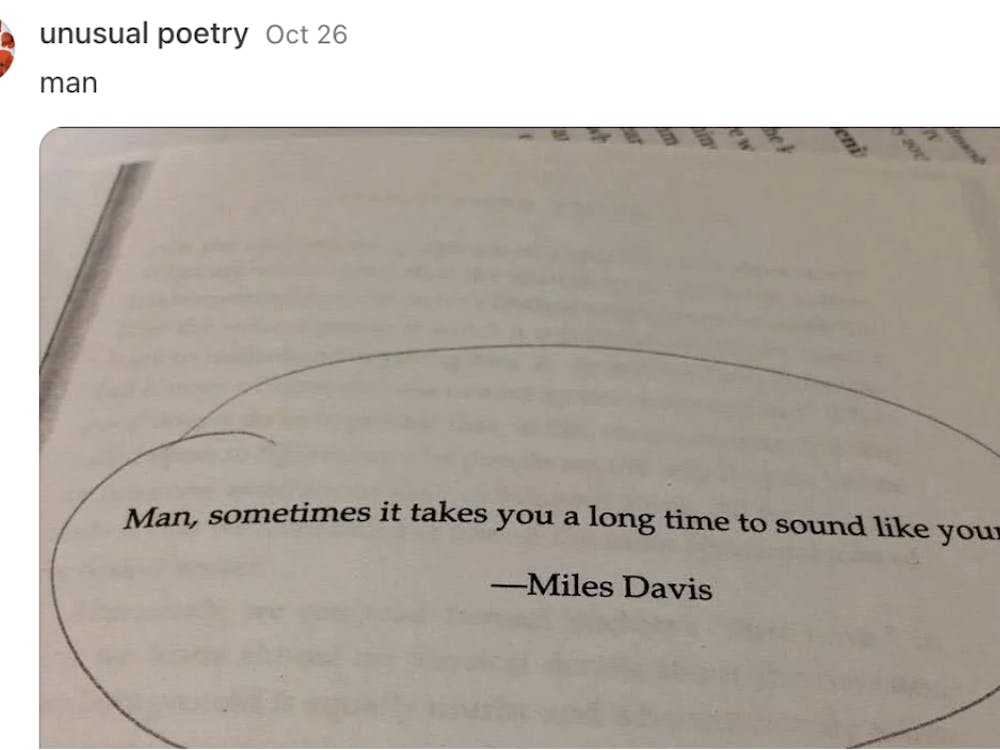When Eric Garner, a 43-year-old Black American man, cried “I can’t breathe” shortly before dying from a chokehold at the hands of a New York City police officer, it wasn’t just because of the officer strangling him. It was also because he had asthma constraining the amount of air he could take in. Garner’s death gained media attention due to uproar from the #BlackLivesMatter movement. But the hashtag #BlackLivesMatter generally makes one think of protests against police brutality and crime in Black communities.
This Earth Week, I challenge the common conceptions of the movement. #BlackLivesMatter is inseparable from environmentalism and climate justice. The purpose of the #BlackLivesMatter movement is to “work vigorously for freedom and justice for Black people and, by extension, all people,” according to their website. Can you truly have freedom if you are being poisoned by pollution in your homes and community?
In Baltimore, asthma is the number one reason for chronic absenteeism in school age children. The problem of asthma in Baltimore City, however, disproportionately affects the lives of Black Americans, specifically those in poverty. Black Americans with asthma are 1.7 times more likely than any other race in Baltimore City to receive emergency treatment for asthma. These ER visits cost $826 on average and can be an extreme burden on low-income families. Understanding who is affected is the easiest part. I think the real question is why does this happens, and how do we counter it?
Disparities in asthma prevalence are attributed to pollution levels, especially those coming from trash incinerators and energy-extraction-related processes, like for burning coal. These machines do not coincidentally arrive in Black communities. They are intentionally placed there. When companies locate themselves it is due to a cheaper cost of land in these communities, who often lack the political clout to fight back.
After decades of redlining that created severe inequities in the city, the impacts of segregation are still seen in lower property values, abandoned homes and degraded property. The placement of pollutant sources in low-income communities exacerbates this systemic inequity. The city is in no hurry to shut them down.
I doubt that companies and the government intend to bring a painful chronic disease to Black Americans, but that is their impact. What’s an excellent way to make sure people can’t fight for change? A disease that causes them to feel like they are drowning or suffocating while walking to a protest on a hot and humid day.
We may praise the University’s announcement of switching to two-thirds solar energy by 2021. But we will continue to release high levels of pollution through our current energy consumption infrastructure until 2021. There are also critical questions that need answers. Where is Hopkins getting its energy from? The Baltimore Museum of Art receives its energy from trash incinerators. The Curtis Bay Medical Waste Center, the nation’s largest medical waste incinerator that directly impacts the health of the predominantly Black neighborhood of Curtis Bay, even had a stand at the Hopkins Bayview campus for Earth Week. Is the University with the top School of Public Health receiving its energy from such incinerators?
When we celebrate Earth Week, we usually talk about the need for recycling, reducing meat consumption and littering less. Facebook and newspapers are infused with companies boasting of “sustainability” with pretty blue and green backgrounds. While I am a proponent of such measures and love cute Earth Week icons, we must be more critical of the role that we can play for the betterment of the environment, now and in the future. Do meat products or the energy you use come from companies who are poisoning Black neighborhoods? We should go one step further and ask: Can we commit to racial equity during Earth Week?
Disrupt your regular Earth Week programming by making a declaration that #BlackLivesMatter. The movement is about police brutality, but just as importantly, it is about the right to clean air, a clean environment and representation in the environmental sector.
Naadiya Hutchinson is a BA/MHS student in Environmental Health and Engineering.





